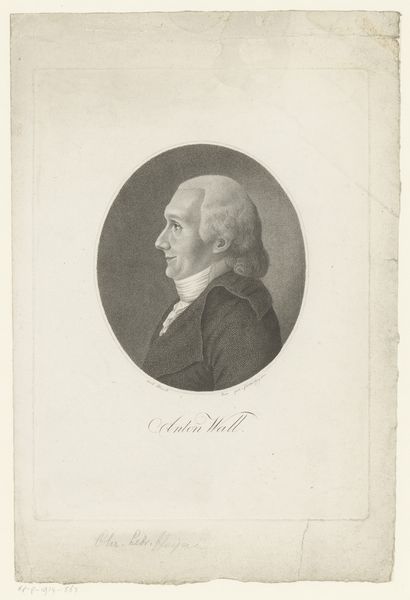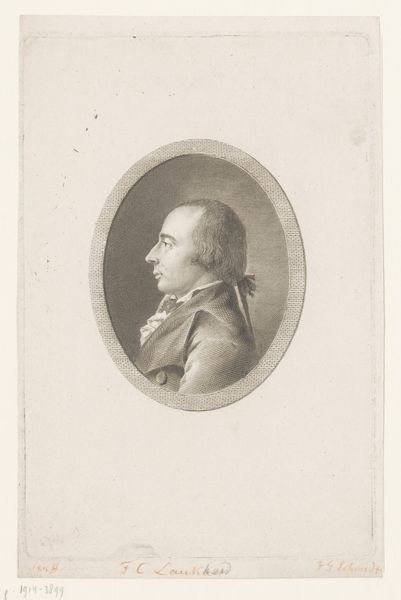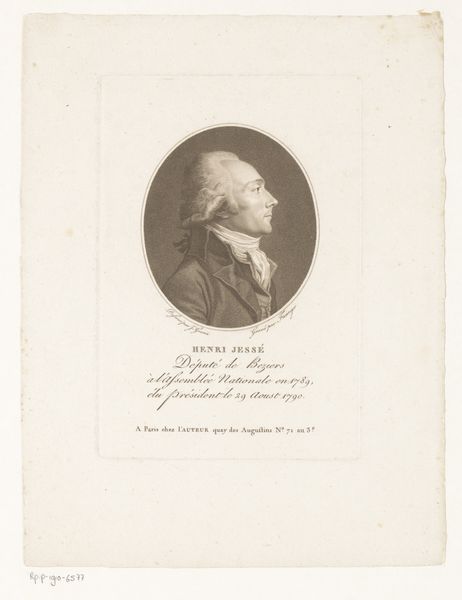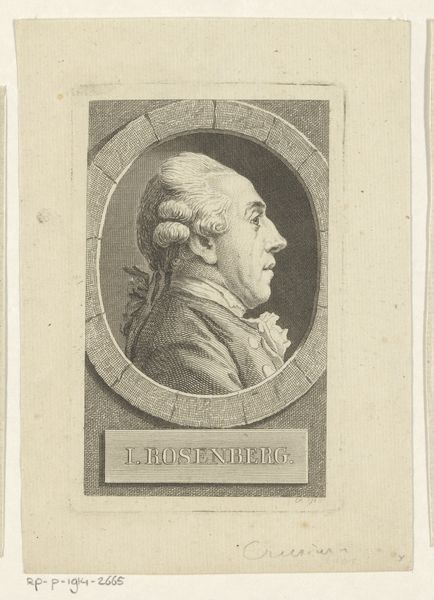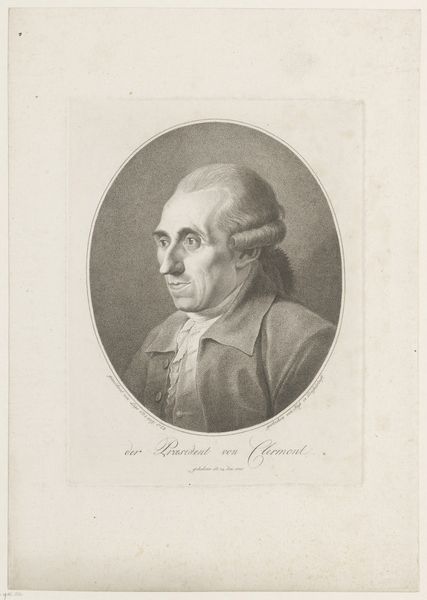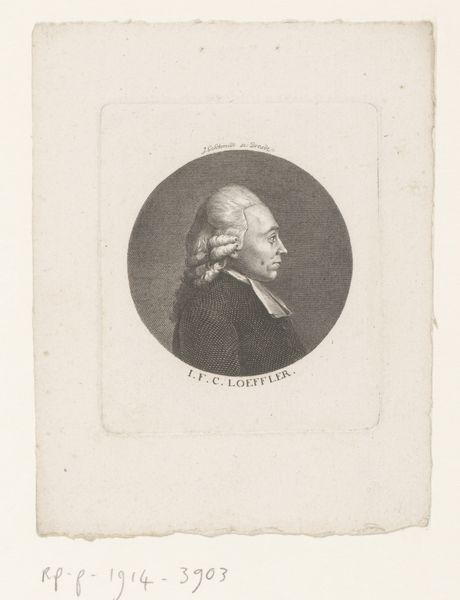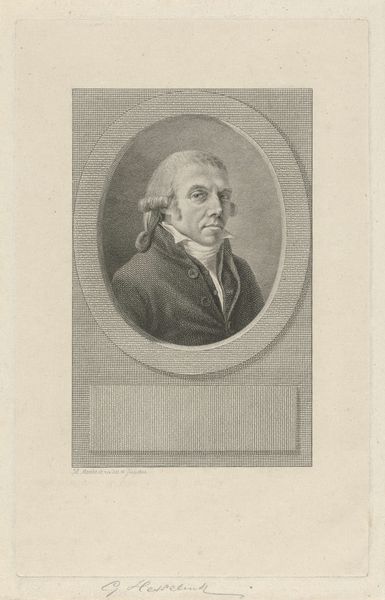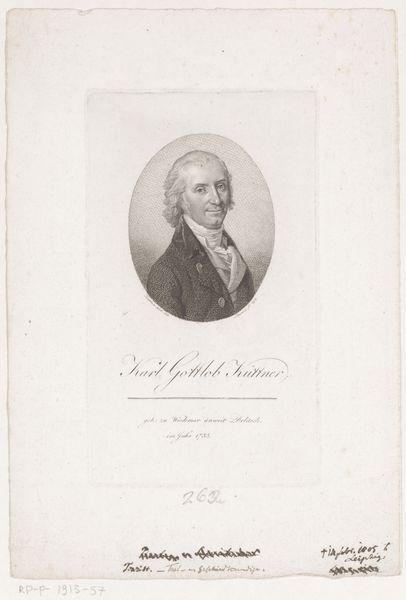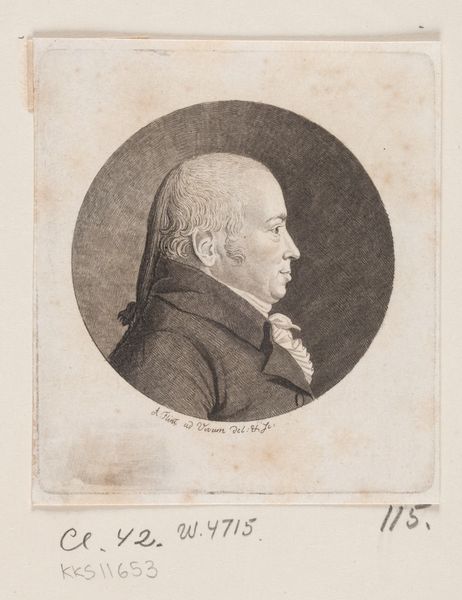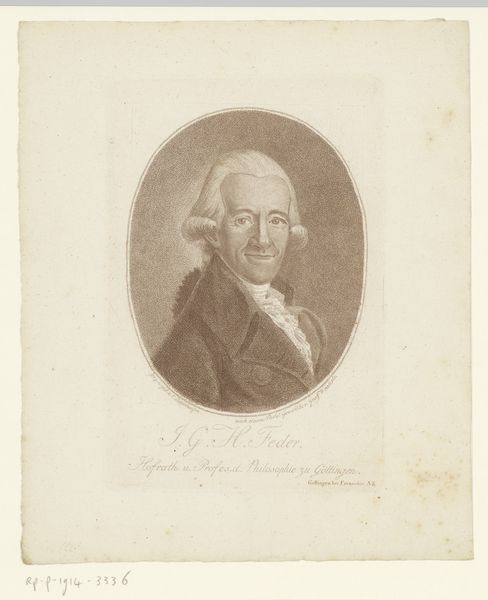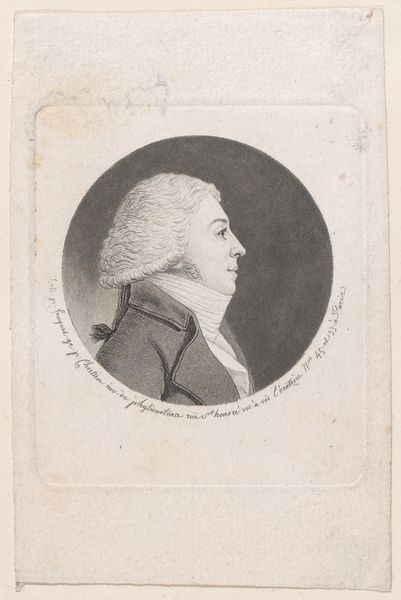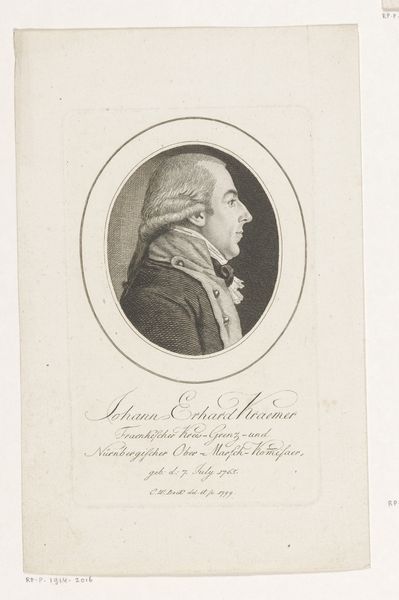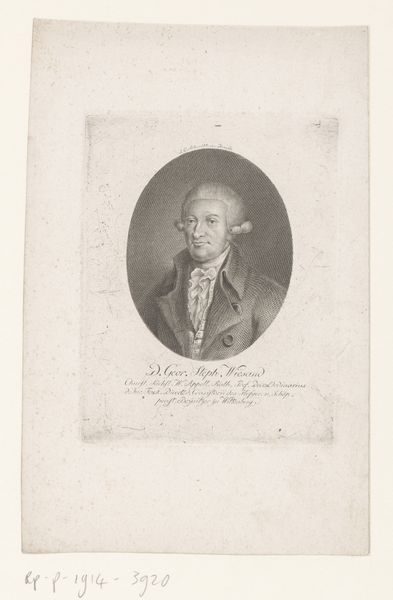
Dimensions: height 214 mm, width 139 mm
Copyright: Rijks Museum: Open Domain
Heinrich Pfenninger made this print of Jean Paul, using a technique called etching. The image starts as a metal plate, most likely copper, which the artist covers with a waxy, acid-resistant ground. Using a needle, Pfenninger scratched away lines, exposing the metal. The plate was then immersed in acid, which bit into the exposed lines, creating grooves. The longer the plate sat in the acid, the deeper the lines became, allowing for a richer, darker tone in the final print. Once the etching was complete, the plate was inked, and the surface wiped clean, leaving ink only in the etched lines. Finally, damp paper was pressed against the plate, transferring the ink and creating the image we see. Consider the labor involved in this process, from preparing the plate to the careful application of ink and paper. Etching allowed for the relatively easy reproduction of images, making art more accessible, yet it still required a highly skilled hand. Recognizing the artistry and labor behind prints like these invites us to appreciate the craft inherent in all forms of artistic expression.
Comments
No comments
Be the first to comment and join the conversation on the ultimate creative platform.
